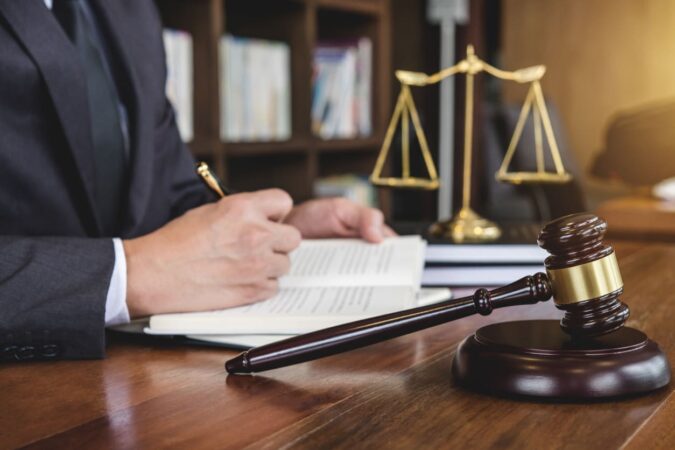
Introduction

Personal injury law encompasses legal claims filed by individuals who have suffered physical or psychological harm due to the negligence or wrongful acts of another party. In the Bronx, New York, personal injury cases are prevalent, with a significant number of residents seeking legal recourse for injuries sustained in various accidents and incidents.
Prevalence of Personal Injury Cases in the Bronx
The high prevalence of personal injury cases in the Bronx can be attributed to several factors, including the borough’s dense population, heavy traffic volume, and diverse range of industries and activities. The borough’s large population increases the likelihood of accidents and incidents, while the high traffic volume contributes to a significant number of motor vehicle collisions. Additionally, the presence of numerous construction sites, industrial facilities, and commercial establishments poses potential hazards that can lead to personal injuries.
Legal Framework
The legal framework governing personal injury cases in New York State is comprehensive and well-established. It encompasses a range of statutes, case laws, and legal doctrines that provide a framework for determining liability, damages, and other legal issues.
Key statutes include the New York Civil Practice Law and Rules (CPLR), which sets forth the procedural rules for personal injury lawsuits, and the New York General Obligations Law (GOL), which includes provisions on negligence and liability.
Statutory Framework
- New York Civil Practice Law and Rules (CPLR): The CPLR governs the procedural aspects of personal injury lawsuits, including the filing of a complaint, service of process, discovery, and trial procedures.
- New York General Obligations Law (GOL): The GOL includes provisions on negligence, liability, and damages in personal injury cases. For instance, GOL Section 5-321 sets forth the elements of negligence, while GOL Section 5-322.1 provides for comparative negligence, which allows for the reduction of damages based on the plaintiff’s own negligence.
Case Law
In addition to statutes, case law also plays a significant role in shaping the legal framework for personal injury cases in New York. Key case laws include:
- Palsgraf v. Long Island Railroad Co. (1928): This case established the “zone of danger” test for negligence, which limits liability to those who are within the foreseeable zone of risk created by the defendant’s actions.
- Martin v. Herzog (1920): This case established the “eggshell skull” doctrine, which holds that a defendant is liable for the full extent of a plaintiff’s injuries, even if the plaintiff had a pre-existing condition that made them more susceptible to injury.
Legal Doctrines
Several legal doctrines also apply to personal injury cases in New York. These include:
- Negligence: Negligence is the failure to exercise reasonable care, which results in injury to another person. In order to establish negligence, the plaintiff must prove that the defendant owed them a duty of care, that the defendant breached that duty, that the breach of duty was the proximate cause of the plaintiff’s injuries, and that the plaintiff suffered damages as a result of the injuries.
- Comparative Negligence: Comparative negligence is a doctrine that allows for the reduction of damages based on the plaintiff’s own negligence. Under New York’s comparative negligence statute, a plaintiff’s damages may be reduced by the percentage of fault attributed to them.
- Assumption of Risk: Assumption of risk is a defense that may be asserted by a defendant in a personal injury case. This defense arises when the plaintiff voluntarily assumes the risk of injury by engaging in a dangerous activity.
Types of Personal Injury Cases
Personal injury lawyers in the Bronx, NY, handle a wide range of cases involving injuries sustained due to negligence or intentional acts. These cases can arise from various accidents, such as car crashes, slip-and-falls, construction accidents, and medical malpractice.
Negligence refers to the failure to exercise reasonable care, resulting in harm to another person. Common examples include car accidents caused by reckless driving, slip-and-falls due to unsafe premises, and medical malpractice resulting from errors in diagnosis or treatment.
Intentional Torts
Intentional torts involve deliberate actions that cause harm to another person. Examples include assault, battery, defamation, and false imprisonment. In these cases, the injured party may seek compensation for damages resulting from the intentional act.
Role of a Personal Injury Lawyer

In the Bronx, personal injury lawyers play a crucial role in protecting the rights of individuals who have suffered injuries due to the negligence or wrongdoing of others. These lawyers are responsible for guiding clients through the complex legal process, ensuring they receive fair compensation for their damages.
Personal injury lawyers in the Bronx possess specialized knowledge of the legal framework surrounding personal injury cases. They understand the intricacies of insurance policies, statutes of limitations, and settlement negotiations. By leveraging this expertise, they help clients navigate the legal process efficiently, maximizing their chances of obtaining a favorable outcome.
Responsibilities of a Personal Injury Lawyer
The responsibilities of a personal injury lawyer in the Bronx include:
- Investigating the accident or incident that caused the injury
- Gathering evidence to support the client’s claim
- Negotiating with insurance companies on behalf of the client
- Filing lawsuits when necessary
- Representing clients in court
- Ensuring clients receive fair compensation for their injuries
By working closely with clients, personal injury lawyers help them understand their legal rights and options. They provide guidance and support throughout the process, ensuring clients’ interests are protected every step of the way.
Finding a Personal Injury Lawyer

When seeking a personal injury lawyer in the Bronx, it’s crucial to find a qualified and experienced professional. Consider the following factors:
- Reputation: Check online reviews and testimonials from previous clients.
- Experience: Opt for a lawyer who specializes in personal injury cases and has a proven track record.
- Communication: Choose a lawyer who is responsive, transparent, and keeps you informed throughout the process.
- Fees: Understand the fee structure and any potential expenses associated with legal representation.
- Referrals: Ask friends, family, or other professionals for recommendations.
Local Resources
The Bronx Bar Association and the New York State Bar Association offer resources to help find qualified personal injury lawyers in the area.
Online Directories
Websites like Avvo and FindLaw provide comprehensive directories of lawyers, including their experience, fees, and client reviews.
Legal Process and Procedures
The legal process for personal injury lawsuits in the Bronx, New York, involves several key steps:
- Pleadings: The lawsuit begins with the plaintiff (the injured party) filing a complaint that Artikels the legal basis for their claim and the damages they are seeking.
- Discovery: During discovery, both parties exchange information and documents relevant to the case, such as medical records, witness statements, and expert reports.
- Trial: If the case cannot be settled through negotiation, it will proceed to trial. At trial, both parties present their evidence and arguments to a judge or jury, who will ultimately decide the outcome of the case.
- Settlement: Most personal injury cases are settled before going to trial. Settlements involve negotiations between the parties to reach an agreement on compensation for the plaintiff’s injuries.
Damages and Compensation
Personal injury cases often result in significant damages to the victim, both physical and financial. Damages refer to the monetary compensation awarded to the victim to cover their losses and expenses incurred due to the negligence or wrongful act of another party. Understanding the types of damages and how they are calculated is crucial for victims seeking fair compensation.
Damages in personal injury cases are typically categorized into two types: compensatory damages and punitive damages.
Compensatory Damages
Compensatory damages aim to compensate the victim for their actual losses and expenses resulting from the injury. These damages are further classified into:
- Economic Damages: These damages cover quantifiable financial losses, such as medical expenses, lost wages, loss of earning capacity, and property damage.
- Non-Economic Damages: These damages compensate for intangible losses, such as pain and suffering, emotional distress, loss of enjoyment of life, and disfigurement.
Calculation of Damages
Calculating damages in personal injury cases involves several factors, including:
- Severity of the Injury: The extent of the victim’s injuries, both physical and psychological, significantly influences the amount of damages awarded.
- Medical Expenses: All medical expenses incurred due to the injury, including hospitalization, surgeries, rehabilitation, and medication, are considered in calculating damages.
- Lost Income: Victims who are unable to work due to their injuries are entitled to compensation for lost wages and benefits.
- Loss of Earning Capacity: If the victim’s injuries permanently impair their ability to earn a living, they may be awarded damages for loss of earning capacity.
- Pain and Suffering: Non-economic damages for pain and suffering are typically determined based on the severity of the injury and its impact on the victim’s life.
Punitive Damages
Punitive damages are awarded in certain cases to punish the defendant for particularly egregious or malicious conduct. These damages are not intended to compensate the victim but rather to deter similar behavior in the future.
Legal Fees and Costs
Personal injury lawyers are typically compensated on a contingency fee basis, which means that they only get paid if they win your case. The contingency fee is a percentage of the settlement or verdict you receive, and it is typically between 33% and 40%.
In addition to the contingency fee, you may also be responsible for other costs, such as filing fees, expert witness fees, and medical records retrieval fees. These costs can vary depending on the complexity of your case.
Contingency Fees
Contingency fees are a common way for personal injury lawyers to get paid. This type of fee arrangement allows you to get legal representation without having to pay any upfront costs. The lawyer only gets paid if they win your case, so they have a vested interest in getting you the best possible outcome.
The contingency fee percentage is typically negotiated between you and your lawyer. The percentage will vary depending on the complexity of your case and the likelihood of success.
Other Fee Arrangements
In some cases, you may be able to negotiate a different fee arrangement with your lawyer. For example, you may be able to pay a flat fee or an hourly rate. However, contingency fees are the most common type of fee arrangement for personal injury cases.
It is important to discuss the fee arrangement with your lawyer before you hire them. This will help you understand how much you will be responsible for paying if you win your case.
Resources and Support
Personal injury victims in the Bronx have access to a range of resources and support services. These resources can provide financial assistance, legal guidance, and emotional support during a difficult time.
Non-profit organizations, government agencies, and community groups offer a variety of services to personal injury victims. These services can include:
- Financial assistance, such as grants or loans to help with medical expenses, lost wages, and other costs associated with an injury.
- Legal guidance, such as free or low-cost legal advice and representation.
- Emotional support, such as counseling and support groups.
Conclusion
Seeking legal representation for a personal injury case in the Bronx is crucial for maximizing compensation and ensuring your rights are protected. By understanding the legal framework, types of cases, and role of a lawyer, you can make informed decisions and navigate the legal process effectively.
The Bronx is a densely populated borough with a high volume of traffic and accidents. If you or a loved one has been injured due to someone else’s negligence, it is essential to seek legal advice promptly. A qualified personal injury lawyer can provide personalized guidance, handle negotiations with insurance companies, and represent your interests in court, ensuring you receive fair compensation for your injuries.





